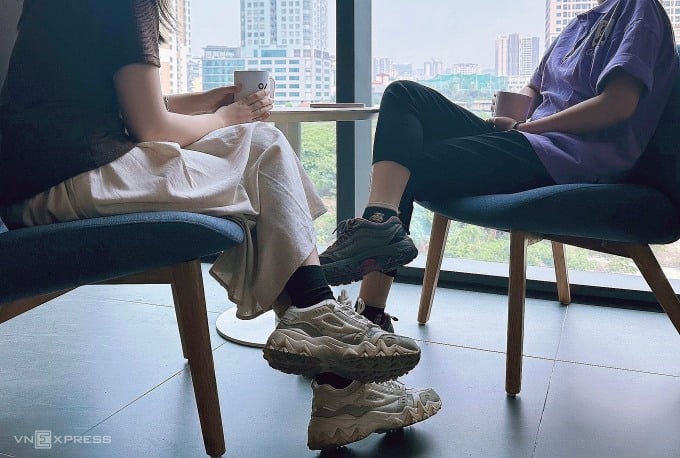Sitting cross-legged causes the spine, joints, back, and hips to bear a lot of force. In the long run, it can cause joint degeneration, pelvic misalignment, and affect walking.
Sitting cross-legged is a familiar position for many people, especially women. In the long term, this position can cause many serious effects on the neck, back, hips, knees, posture, gait, especially for people with varicose veins.
On May 23, Dr. Le Bao Le, Department of Internal Medicine and Orthopedics, University of Medicine and Pharmacy Hospital, Ho Chi Minh City, said that when sitting cross-legged, one leg placed on the thigh of the other leg, the hip is no longer balanced but must lean to one side. In order for the body to regain balance, the spine must lean to the opposite side, over time causing the spine and neck to no longer be straight due to having to bear more force than usual.
In addition, the back, neck, and hips are also under a lot of pressure, making them more prone to pain and fatigue. When crossing your legs, the lower area is also under a lot of pressure, making varicose veins worse.
Sitting cross-legged causes the hip area to bear uneven force, leading to uneven development of the muscles in the spine and hips. The side that bears more force will be larger, affecting posture and even walking.
Dr. Calvin Q Trinh, Head of the Musculoskeletal Correction Center at Hospital 1A (HCMC), also said that this habit disrupts the body's symmetry, causing pelvic distortion, even causing pain in the lumbar region and knee pain. Crossing the legs can put pressure on the peroneal nerve behind the knee, and blood flow to the joints in the legs is also reduced, hindering the process of creating synovial fluid in the joints, causing the joints to dry out.
"This increases pressure on the cartilage and stretches the ligament system, leading to the risk of osteoarthritis," the doctor said.
Crossing your legs for a long time also causes the knee joint to be pressed in the wrong position, increasing pressure on the cartilage, causing the ligament system to stretch. This position is dangerous for people with bone and joint diseases, people with venous insufficiency, making the disease worse, making it difficult to walk, affecting the quality of life.

Sitting cross-legged is a habit of many women when working or going to a cafe. Photo: Minh An
According to Dr. Le, the best sitting position for health is to sit with both legs parallel, back and neck straight. This position distributes force evenly to the neck, back, and pelvis. At this time, the body is balanced, limiting the impact on the muscles, bones, and spine. Occasionally, women can sit cross-legged, but it should not become a habit.
For those who have to sit for long periods of time, it is recommended to straighten the legs and put the feet forward, or just cross the legs. People who do sedentary office work should stand up every 60-120 minutes of sitting and walk around to limit pain.
When you have pelvic or spinal misalignment or bone and joint problems, you need to go to the hospital for examination and treatment to restore, relieve pain, and improve motor function.
Minh An
Source link




















































![[Maritime News] More than 80% of global container shipping capacity is in the hands of MSC and major shipping alliances](https://vphoto.vietnam.vn/thumb/402x226/vietnam/resource/IMAGE/2025/7/16/6b4d586c984b4cbf8c5680352b9eaeb0)













































Comment (0)